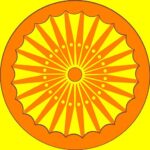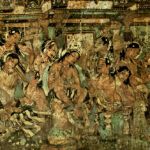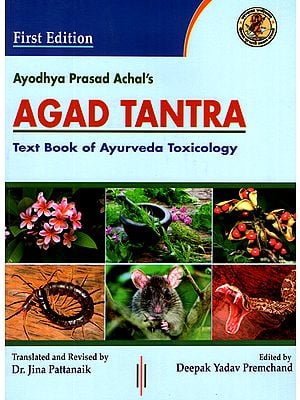
After Pharmacognosy/Pharmacology, it is only appropriate that we move on to Toxicology. While Dravya Guna studies and catalogues medical substances, Agada Tantra is the branch of Ayurveda dedicated towards cataloguing and neutralising poisons.
Introduction
In a dangerous world filled with fiendish creatures (not just the human variety!) and venomous vermin (same goes!), it is imperative for physicians to be trained in the counteracting of poisons. Toxins have threatened and been tackled by humanity since time immemorial. However, history is written by the victors. Parvenus are no strangers even to the realm of poison control.
Mathew Joseph Orfila (1787) was a Spanish chemist cited as the “Father of Toxicology”, yet the practice in India dates back to before Charaka. Shivoham’s splendid 2 part Series on Bezoar & Gorochana provide two sides of the civilizational coin in poison control. A civilization of the Forest & Jungle is invariably going to have some experience in and expertise on venom treatment. Agada tantra is included in Ashtaanga (8 branch) Ayurveda by Sushruta and Maharshi Kashyapa.
“Aachaarya P.V.Sharma, in his work ‘Shodasaangahr-dayam , defines ‘agada’ in follo-wing words –
“Gaa indhriyaani sadhyo ghnantheethyethe gadhaah budhau prokthaa |
Vishaamithi vishaadha-janananaadh-agadhasthoshaam pratheekaarah || Sodasaangahrdayam 14.1
Poisons are called ‘gada’ as they cause loss of function in organs, and ‘visha’ because they produce extreme depression. ‘Agada’ is their antidote.” [1,1]
It should be noted that there are many words for the the same concept.
“Aachaarya Amarasimha (author of Amarakosha) has enumerated five synonyms for the word ‘agada’; these are:
Bhesajaushadhabhaisajyaanyagadho jaayureethyapi | A.K. 2.6.50
- Bhesajam
- Aushadham
- Bhaishajyam
- ***
- Jaayuh”
Other synonyms include visha-gara-vairodhika prasamana,Dhamshtra vijnaana, vishatantra, jaangalee” [1,1]
A more common word than Agada is Tantra. This can be found everywhere from the famed form of intimate worship to the more innocent Panchatantra.
“Thraayathe shareeramananethi thanthram |
Tantra is a treatise or science
Thanothi vipulaarthaana thatthvamanthrasamambhithaan |
Thraanam cha kuroothe yasmaatthanthramithyabhidheeyathe ||
The science capable of relieving the soul from the cycle of birth, life and death is known as tantra.
“Aachaarya Sushruta, in the first chapter (Vedotpatti adhyaaya) of Sootrasthaana, defines ‘Agada-tantra’ as:
Agadhathanthram naama sarpakeetaloothaamooshakaadhidashtavishavyanjanaartha
Vividhavishasamyogopashamanaartha cha || SS.Su.1.8 (6)
Agada-tantra is intended for diagnosis and the management of various poisonings such as with bites of sarpa (snakes), keeta (insects), lootaa (spiders) and mooshaka (rats) etc. besides other poisonous substances.” [1,1]
Terminology
- Visha—Poison
- Prathivisha—Antidotes
- Paryaaya—Synonym
- Uthpathhi Sthaana—Habitat
- Svaroopa—Morphology
- Maasha—Beans
- Maashaka—Weight in Beans
- Vilayathaa—Solubility
- Nihsvaasa—Breath
- Svaasa—Respiratory Failure
- Praseka—Salivation
- Klama—Fatigue
- Vamathu/Chardhi—Vomiting
- Asrk/Rudhira—Blood
- Kaasa—Cough
- Hikkaa—Hiccough
- Angashoola—Limb Pain
- Moorchaa—Fainting
- Vepana—Trembling
- Chimichima—Tingling
- Romaharsha—Horripilation/Goosebumps
- Srasthaanga—Sluggishness
- Bhramaa—Giddiness
- Kandoo—Itch
- Thandhraa—Drowsiness
- Paaka—Inflammation
- Jvara—Fever
- Mukhaphena—Mouth-Foaming
- Aruchi—Anorexia
- Dhamshtra—Fangs
- Pureesha—Stool/Dung
- Moothra—Urine
- Sankledhi—Sticky
- Picchila—Slimy
- Laalaa—Saliva
- Asthi—Bone
- Sooka—Bristle
- Thunda—Beak
- Araa—Sting
- Mandooka—Frog
- Prachalaaka/Krntaka—Chameleon
- Godhikaa—Lizard
- Varatee—Wasp
- Makshikaa—Flies
- Mashaka—Mosquito
- Mathkuna—Bugs
- Keeta—Insects
- Kanabha—Locust
- Loothaa—Spider
- Vrschika—Scorpion
- Sambooka—Snail
- Jalaayukaa—Leech
- Mooshika—Rat
- Shva/Shuna—Dog
- Gomaayu—Jackal
- Tharakshu—Hyena
Methodology
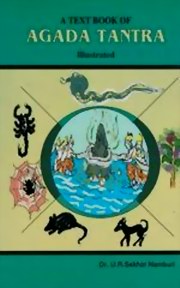
“Punarvasu Aatreya informs Maharshi Agnivesa about the topics he would elaborate in the twenty third chapter of Cikitsaasthaana of Caraka Samhita; he quotes:
Prayuthpatthim gunaan yenim vegaamlingaaanyupakramaan |
Vishasya bruvithah samyagaginavesanibodhame || Cs.Ci.23.3
i.e. O! Agnivesa listen to me cautiously. I shall elaborate visha (poison) with reference to the following facets:
- praagutpatti (mythological origin of visha (poison)
- guna (properties) of visha (poison)
- yoni (source) of visha (poison)
- vega (stages of virulence) of visha (poison)
- linga (signs and symptoms) of visha (poison) and
- upakrama (therapeutic modules) for trea-ting visha (poison).” [1,4]
In hallowed texts treating on Agada Tantra, reference is made to the famous Samudra Manthana episode of Vishnu Puraana. The Devas and the Asuras churned the ocean for the nectar of immortality (amrtham). In the process, Visha (poison) emerged and terrified the cosmos with his fiery mien. The great poison Haalahala required Shiva himself to consume it in order to protect all life.
Elsewhere, the origin of poison makes reference to the Creator (Brahmadeva):
“While (The Creator) was creating the universe a demon named Kaitabha, out of conceit, put obstacles which angered [Brahma], the abode of powers, from mouth of who the anger in physical form, a terribly fierce one, fell down. It burnt to ashes the roaring demon, mighty and like death–god. Thereafter its miraculous luster developed further which, on the very sight, produced languor in gods; because of producing vishaada (languor), it came to be known as ‘visha’ (poison). Then, after creating the progeny, the Lord put the remnant anger in beings – jangama (mobile) and cara or sthaavara (immobile). ” [1, 6]
Acharya Vagbhata notes that Visha (poison) is in two categories. The first is Akrtrima or natural and the second is Krtrima or artificial. Akrtrima has 2 types (Sthaavara (immobile) and Jangama(mobile/animal) while Gara is an alternate name for Krtrima.
“These are the ten attributes of visha (poison) according to the expert vishatajjna (toxicologists). “ [1, 12]
“By virtue of rooksha (non-unctuous) property, it aggravates vaata; its ushna (hot) property aggravates of pitta; its sookshma (minute) property vitiates the askr/rakta; its avyakta or anirdesya rasa (indistinct taste) aggravate kapha; it quickly permeates through the annarasa (chyle) because of its sheegra/aashu (quick acting) attribute; because of its vyavaayi (all-pervading prior to digestion) attribute, it quickly spreads throughout the deha (body); its teekshna (sharpness) property is marmaghna (injuring the vital parts); vikaasi (slackening) property of visha (poison) is praanaghna (death causing); its laghu (lightness) property is responsible for durupakrama (difficulty in management); its vishada (non-sliminess) property, pervades all the doshas and circulates with them persistently.” [1, 12]
“AS.Ut.40.18-19
When the rakta (blood) vitiates (because of the poison), it causes cimicima (tingling sensation) all over the sareera (body) along with samandala kottha (circular urticarial rashes), sveda (sweating), romaharsha (horri-pilation), sensation similar to visarpana (crawling) of kshudra-keeta (small insects) all over the anga (body), vinaama (bending over) of the gaatra (body), jrmbhaa (yawning), he is sisira-priya (likes cold articles); spreading aggressively in the rakta (blood) and other tissues visha (poison) by its tejah (strength) over power the vaata etc. even though they are balina (strong). ” [1, 15]
Poisons are distinguished as being slow-acting or fast-acting. Some spread from the head region (uttamaanga) causing kottha (rashes) and shoona-sirah (swelling in the head region) in the orbitals (akshitkoota), ostha (lips), naasa (nose), aasya (oral cavity). There may also be teeth-sensitivity (hrshttadanthathaa), thaalusosha (dryness of palate), moordhni-rujaa (headache), cimichimaayana (tingling sensation) and lockjaw (hanugraha). These are some of the symptoms that are advised to be observed in general. [1, 16]
“Visha (poison) first vitiates the dosha by which it is bhooyishttha (predominant), get localized in those aashayas (abodes/sites) which are specific to that dosha and produce vikaaras (diseases).” [1, 16]
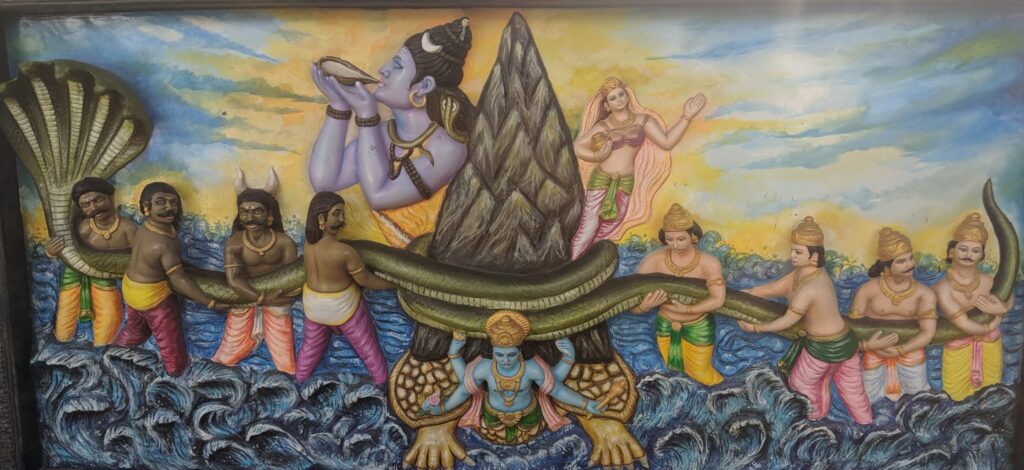
Sushruta’s view is complex and methodical. He divides it into various varieties and their specific symptoms:
Moolavisha (root poison) results in
Udhveshtana (cramps), pralaapa (delirium), moha (mental confusion)
Pathravisha (leaf poison) results in
Jrmbhaa (yawning), anga udhveshtana (cramps in limbs), Svaasa (dynspnoea/asthma)
Phalavisha (fruit poison) results in
Muskhasopha (inflammation of scrotum), Dhaaha (burning sensation), Anadhvesha (aversion to food)
Pushpavisha (flower poison) results in
chardi (vomiting), aadhmaana (flatulence), moha (mental confusion)
Thvak (bark), saara (pith) and niryaasa (exudation) visha results in
aasya-dhaurgandhya (halitosis), paayrushya (roughness), siroruk (headache), kapha smasraava (excessive discharge of mucus)
Ksheeravisha (sap poison) results in
phena-aagama (frothing from mouth), vidbhedha (diarrhoea), guru-jihvataa (heaviness in tongue)
Dhaathuvisha (mineral poison) results in
hrthpeedana (cardiac distress), moorchaa (fainting), thaalu dhaaha (burning sensation in palate). [1, 29]
Vagbhata describes the phenomenon of chronic poison (dhoosheevisha) as follows:
“Though doosheevisha is alpa veerya (mild in potency), it is not to be overlooked; since it is varsha-ganaanubandhi (abodes body for years to come), it gets aavrtta (enveloped by kapha). Bothered by it, the person eliminates bhinna pureesha (loose [motions/stool]) of varied varna (colours), becomes a rogee (patient) of dushta-asra (vitiated blood) along with trd (thirst) and arocaka (anorexia); the patient suffers from moorchaa (fainting), vamana (vomiting), gadgada vaak (incoherent speech), moha (stupor) and develops ling (clinical features) of doosyodara (abdominal disorders).” [1, 31]
Poison Stages
Charaka provides a detailed process of poison activation. These stages are the indicators of which toxicologists should be wary:
“In human beings, the effects of vishas (poisons) are revealed in eight different stages as follows –
In the prathama vega (first stage), because of the vitiation of rasa (plasma), the patient suffers from trn (morbid thirst), moha (unconsciousness), dantaharsha (tingling sensation in teeth), praseka (salivation), vamathu (vomiting) and klama (fatigue).
In the dviteeya vega (second stage), because of the vitiation of asrk/sonata (blood), the patient suffers from vaivarnya (discolour-ation of skin), bhrama (giddiness), vepathu (trembling), moorchaa (fainting), jrmbhaa (yawning), anga cimicima (tingling sensation in the limbs) and tamaka (dyspnoea).
In the trteeya vega (third stage), because of the vitiation of pisita or maamsa (muscle tissue), the patient suffers from andala (circular eruptions), kandoo (pruritus), svayathu (oedema) and kotta (urticaria).
In the caturtha vega (fourth stage), because of the vitiation of vaata etc., the patient suffers from daaha (burning sensation), chardi (vomiting), angasoola (pain in the limbs), moorchaa (fainting) etc.
In the pancama vega (fifth stage), the patient suffers from neela darsana (bluish-vision) or tamasah darsana (dark-vision) etc.
In the sasttha vega (sixth stage), the patient suffers from hikkaa (hiccough).
In the saptama vega (seventh stage), the patient suffers from skandha bhanga (dis-location of shoulder girdle).
In the ashtama vega (eight stage), the patient surrenders to death.” [1,17]
Poison Catalogue

Not your typical Macy’s mail-order selection, there is nevertheless and extensive poison catalogue documented by Classical Indic Sources, along with their antidotes. Given the lengthy litany, we will restrict this section to a few examples.
“Rasendrasaarasangraha enumerates seven kinds of upavisha (mild poisons); he quotes
Arka (Calottropis procera), Sehunda (Euphorbia nerrifolia), Dhoostoora (Datura metel), Laangalee (Gloriosa superba), Karaveera (Nerium indicum), Gunja (Abrus precatorius) and Ahiphena (Papaver somniferum).” [1, 78]
Elsewhere, the Rasatarangini quotes 11 (many of them inclusive of the preceding list). Nevertheless, the traditional Nighantus are the best sources of these poison catalogues. They are replete with mentions of both mobile and static poisons as well as swift and slow-acting poisons, as well as treatment of vishaakthathaa (poisoning).
Application
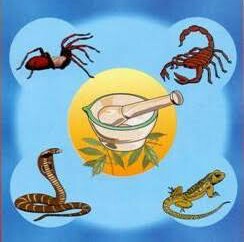
A pound of practice is worth a tonne of theory. Nowhere is this more apparent than in the realm of medicine. All the theoretical hypothesising in the world can’t replace the reality of medical efficacy. “Does the treatment work effectively?“—this is the operative question that every healer (and patient) must bear in mind.
Agada Tantra is a several thousand year old practice of poison treatment. Much of this knowledge comes down to us today in incomplete fashion. Even more traditional knowledge is tucked away in one of the many 600,000+ villages in India. Deeper practical study of this must be engaged/observed in the field. However, textual evidence redounds and abounds for laypersons to consider. Sushruta is illustrative here:
“desaprakrthisaathmyarthuvishavegabalaabalam |
pradhaarya nipunam buddhaya thathah karma samaachareth || SS.K.5.34
One should start the treatment after considering well desa (land as well as the specific part of the patient’s body), prakrti (cosntitution), saatmya (suitability), rtu (season), vishavega (velocity of the poison) and patient’s bala-abala (strength and otherwise).” [1, 35]
True to the time, some texts like Lokopakara make reference to various mantras in order to ward away the effects of poisons. However, much more practical information is also included with this.
Snakebite
Snake-bite (sarpa-dhamsa) and even imaginary snake-bite (sankaa-visha) are discussed in tremendous detail. The land of the king cobra is, not for nothing, a specialist in treating (and administering!) snake-poisons: “Vaasuki is superior among the innumerable vikhyaata sarpas (renowned snakes) such as takshaka etc.; these are maheedhara (sustain earth) and naagendra. Bhauma sarpa (earthly snakes) are categorized into following five: darveekara sarpa → 26, mandalin sarpa → 22, raajimanta sarpa → 10, nirvisha sarpa → 12, vaikaranja sarpa → 3.” [1, 137]
Snake-bite (sarpa-dhamsa) is divided into 3 categories: sarpitha (deep bite), radhitha (superficial bite) and nirvisha (non-venomous bite).
As mentioned above, Chaavundaraaya’s provides a methodical protocol for treating snake-bite itself.
“Preliminary methods
…Cut the site of the snakebite, and massage well to remove any venomous substances. Remove the blood at the site after tying a tourniquet above and below the site of the bite. The site of the bite should be burned, and blood vessels rubbed softly so that the venom does not vitiate the body. These preliminary methods, if undertaken immediately, mitigate the effects of the venom.
13.The site of the bite of a large hooded boa or a chain viper should be burned with hot rods of gold, iron, etc., or even by live charcoal. Fire burns the venom into ash and the venom does not spread into the body” [4, 54]
Several non-species specific forms of anti-venin are also prescribed. Again, readers are advised to rely on licensed physicians and experts in the event of snake-bite or poison. This reprinting here should be seen for educational purposes rather than professional purposes:
15. Administration of an excellent medicine prepared from curd, butter, black pepper, long pepper, ginger,and salt detoxifies the patient from many types of snakes.
16. Administration of a medicine prepared from mixture of juices of the roots of bitter apple (patalagaruda (Cocculus hirsutus), bracteated birthwort, and aparajta (Clitoria ternatea) added to the juice of the pulp of bitter gourd, detoxifies the patient.” [4, 54]
Anti-venin typically refers to medication synthesised from species-specific venom. While the Lokopakaara provides some species specific remedies, they are not from the poison itself, and thus, better termed antidotes:
“Chain viper
21. To detoxify the venomous effect of the bites of vipers, the medicated ghee should be prepared as follows:
Plant of [rooster’s] comb, flowers and seeds of Indian beech, ghee, honey, leaves of arangaka (Melia composita), and black mustard should be ground. Alternatively, sweet flag, root of barren bitter gourd are to be ground and added to the ghee. Any one of the two medicated ghee preparations can be administered to the patient to detoxify him from the effects of venom of chain vipers.” [4, 55]
For the Cobra: a paste of zedoary rhizomes mixed with ghee and gingelly (sesame) oil is prescribed. For general serpents, a paste of ground black pepper, long pepper, roots of yellow snake tree, roots of Indian oleander, roots and flowers of madar in gruel are applied to the patient. [4, 55]
Other species
Although snakebites tend to be the most common of ailments, other species are also treated.
Centipede-bite
“Eight kinds of satapadees (centipedes) are enumerated by Aachaarya Susruta; he quotes –
Shathapadhyasthu – purushaa, krshnaa, chithraa, kapilaa, peethikaa, rakthaa, shvethaa, agninaprabhaa, ithyashthau | SS.K.8.30.” [1, 121]
He then describes the signs and symptomes as follows:
“Bite of satapadees (centipedes) cause Sopha (localized oedema), vedanaa (pain), hrdaya-daaha (burning sensation in the cardiac region); Shvetaa and agniprabhaa’s bite results in more intense daaha (burning sensation) and moorchaa (fainting) along with rise of sveta pidakaas (whitish eruptions).” [1, 171]
Treatment is holistic. He enumerates it as follows:
“Kumkuma, tagara, shigru, padmaka, haridraa, and daaruharidraa punded with water is an excellent agada (anti-poisonous recipe) for satapadee vishaa.” [1,171]
Scorpion-sting
Scorpions are common throughout the arid regions of India. Sushruta categorized them on the basis of their toxicity: mandhavisha vrschika (mildly toxic scorprion), madhyavishaa (moderately toxic), and mahavisha (highly toxic). He then lists 30 types on the basis of their shape. The mildy toxic are as follows: black, blackish, variegated, pale, deep yellow, rough, bluish, yellowish, smoky, hairy, grass like, reddish, and white abdomen. Those of other toxicities are variations thereof.
Prescriptions is as follows: “The site of bite should be subjected to svedana (fomentation); abhyanga (anoining) of whily body of the patient with ghrta (ghee) and lavana (salt) should be done. Ushna seka (warm irrigation) is also prescribed). Patient should be asked to consume ghrta (ghee) as per his digestive capacity.” [1, 169] Highly toxic scorpion wounds should be rubbed with turmeric powder and various flowers. Medical honey is also suggested after irrigation.
Spider-bite

“Aayurvedic classics mention fatally toxic kinds of spiders. Citing graveness of their bite Aachaarya Sushruta quotes –
Loothaavisham ghorathamam doovijneyathamam cha thath |
Dhooschikithsyathamam chaapi bheeshagbharmandhaboddhibhih || [1, 172]
The lootaavisha (bite of spider) is ghoratama (extremely severe), durvijneya (difficult to comprehend) and duscikitsya (difficult to treat) by a mandabuddhi bishak (physician of low intelligence).” [1, 172]
Sushruta goes on to note that while a scorpion sting manifests itself quickly, the spider-bite takes several days to make itself apparent. He provides symptomology as follows:
Day 1: “Loothaavisha (venom of spider), on first day of bite, causes eeshat kandoo (mild itching), kottha (allergice rashes) with avyakta varna (unmanifest colour); the visha (poison) is pracala (shifting in nature.” [1, 172]
Day 2: “Loothavisha (venom of spider), on second day of bite, has pravyakta roopa (more manifes-tation) and the kottha (allergic rash) is shoona (swollen) in the antah (periphery) and parinimna (depressed) in the madhya (mid region).” [1, 172]
Day 3: “Loothaavisha (venom of spider), on third day of bite, has more clear roopa darsana (mani-festation of features.).” [1, 172]
Day 4: “Loothaavisha (venom of spider), on fourth day of bite, attains koap (aggravation).” [1, 172]
Day 5: “Loothaavisha (venom of spider), on fifrth day of bite, results in visha-prakopaja vikaaras (diseases due to poisons)”. [1, 172]
Day 6: “Loothavisha (venom of spider), on sixth day of bite, attains prasaara (dispersion) and does aavarna (enveloping) of marma-pradesa vital regions).” [1, 172]
Days 7: “ Loothaavisha (venom of spider), on seventh day of bite, is atipravrddha (severely aggravated) and it inflicts the whole gaatra (body); thus resulting in mrtyu (death).” [1, 172]
Acharya Sushruta then classifies these species based on curable and incurable spider bites:
“Loothaa (spiders), on the basis of prognosis, are of two kinds –
krchhrasaadhya loothaa (difficult to cure spider bite)” [1, 173]
1.trimandalaa, 2.shvetaa, 3.kapilaa, 4.pitikaa, 5. aalavishaa, 6. moothravishaa, 7.rakthaa, 8. kasanaa
Tell-tales signs are sirodukham (headache), kandoo (itching), vedanaa (pain) and slaismika and vaatika gada (disorders).
“asaadhya loothaa (uncurable spider bite)” [1, 173]
1.sauvarnikaa, 2. laajavarnaa, 3.jaalinee, 4.enipadee, 5.krshnavarnaa, 6.agnivarnaa, 7.kaakaandaa, 8.maalaagunaa
These are distinguished as follows:
Dhamsakotha (putrefaction of bite site), kshatajasya pravrttih (bleeding from site), jvara (fever), daaha (burning sensation), atisaara (diarrhoea), and tridosaja gadas (disorders).
“Besides, pidakaas (boils of various aakaaras (shes), mahaan mandala (large circular patches) and sopha (oedema) which is mahaa (large), mrdu (sift), rakta (reddish), syaava (blackish) and cala (shifting in nature).” [1, 173-4]
Sushruta then provides species specific identification of spider bites in tremendous detail. Of more immediate important is the treatment he prescribes. Some are general, while others are more specific or even ancillary. He discusses everything from nasyakarma (medicated errhines) to paana (oral drugs) to oordhva samsodhana (emesis). Specific dravyas are then mentioned as useful: arkaparnee, kaarpaasa, rakthachandhana, saivaala, saarivaa, svarnaksheeri, thvak, vaikamkatha, hreebera. [1, 177]
Bees, Wasps, and Hornet sting

Discussion and treatment of these insects is fairly basic. Standard treatment is prescribed, starting with removal of the sting. Modern treatment is advisable today as per board certified physicians. The traditional treatment is as follows:
- “Leaves of tulasee mixed with ghrta (ghee) and saindhava (rock salt) can be applied.
- Application of marica, saindhava lavana, sauvarcala lavana and sintthee mixed with juice of leaves of naagavallee is helpful.
- Satadhauta ghrta
- Sahasradhauta ghrta
- Dasaanga lepa, etc.” [1, 179]
Rat bite

Rat bites are discussed in some detail. Being traditional carriers of disease and often being aggressive in groups, it is considered to be not just noxious but poisonous. Although the source of the poison is likely erroneous, Susruta and Charaka carefully detail its effects:
“Bite by mooshika (rat) causes paandu sonita (pale blood), mandala (circular patches), jvara (fever), aruci (anorexia), lomaharsa (horripilation) and daaha (burning sensation).” [1, 180]
Interestingly enough, these too are divided into curable and incurable bites. Vagbhata is illustrative here:
“When poison of aaku (rat) results in soonabasti (oedematous bladder), vivarna oshttha (discoloured lips), formation aakhvaabha granthi (elevations similar to rat) and emiting of chuchundara gandha (rat like odour) then the patient should be rejected of treatment (i.e. he is incurable).” [1, 182]
Treatment of rat-bite is manifold and multi-faceted. For the sake of brevity (a rarity here at ICP…) we will limit ourselves to a few examples:
“Immediately after the bite by mooshika (rat), the site should be subjected to dahana-karma (cauterization) using kaanda (reed) or darpana (glass piece); failing to do so will result in teevra rujaa (excruciating pain) and formation of karnikaas (auricular growths). This should be followed by application of lepa (anoint-ment) made of sireesha, rajanee (haridraa), vakra (tagara), kunkuma and amrtavallee (gudoochee).” [1, 182]
Rabies

Rabies (alarka-visha) is transmitable by multiple species. However, dogs are the primary mechanism of transmission. Alternately known as hydrophobia or lyssa, rather than poisonous it is deemed toxic. “As per Aachaarya Vrddha Vaagbhata:
Dhamsasthena vidhashtasya supthah krshnam ksharathyasak ||
Hrcchirorugjvarasthambhathrshnaamoorchedhbhavo’nu cha || AS.Ut.46.8
Bite of alarka (rabid dog) causes
suptataa (sleepiness), oozing of krshna asrk (blackish blood), krdruk (cardiac discomfort), siroruk (headache), jvara (fever), stambha (stiffness), trshnaa (morbid thirst), moorchaa (fainting).” [1, 183]
Charaka, Sushruta, and Vagbhata all provided detailed measures for treatment. The middle authority writes as follows:
“In case of rabid bite, visraavana (draining) of site of damsa (bite) should be done and followed by paridaaha (cauterization) using sarpi (ghee); pradeha (anointing) of agada (anti-poisonous recipe) should be done at the site; puraana sarpi (aged ghee) should be prescrbed to the patient; visodhana (purification) should be done using drugs macerated with arkaksheera (latex of Calotropis); svetaa and punarnavaa should be mixed with dhattoora and given to the patient.
Combination of palala (crushed sesame), tilataila (sesame oil), payah (latex) of roopikaa (Calotropis) and guda (jaggery) destroys alarka visha (toxins of rabies) as anila (wind) disperses the meghavrnda (cluster of clouds).” [1, 186]
A cornucopia of medical ghees are prescribed for various ailments. Hydrophobia is no exception. Here is Acharya Vrddha Vagbhata on the topic:
“Siddha ghrta (medicated ghee) made from decoction of patra (leaves), tvak (bark) and moola (roots) of jalavetasa is used as paana (drink), nasya (errhines), abhyanjana (massage) and lepana (anointing) in all kinds of jalatraasa (hydrophobia)…To the decoction of yava, maasha, kulattha and panchamoola are added two parts of ksheera (milk) and one part sarpi (ghee) and slakshna kalka (fine paste) made of ashvagandhaa, sahaa, kushttha, brhatee, rajanee, daaruharidraa, vidaaree, nata, katvanga, payasyaa, sinduvaaraka, sarpagandhaa, nakha, abheeru, sarkaraa and raktacandana are added and processed.
This medicated ghee is used as paana (drink) and for abhyanga (massage); this recipe pacifies upadravas (complications) arising from sva damstraa (bite of dog). ” [1, 186-7]
Sushruta provides a more systematic prescription to treat rabies:
“Root of sarapunkhaa one karsha (10 gm.) and root of dhattoora half karsha (5 gm.) is pounded with tandulodaka (rice water) alongwith tandula (rice); this is wrapped in a patra (leaf) of unmattaka (dhattoora) and cooked into apupa (kind of sweet cake); this should be consumed by the patient of alarkavisha (rabies) during the aushadha kaala (appropriate schedule of drugs).
This recipe, during digestion, produces sva-vikaara (activities of dog or animal) in the patient; this should be managed by placing him in a sisira grha (cool room) from…vaari (water).
When the vikaaras (complications) abate, patient should be subjected to snaana (bathing) on the next day and he be served boiled saali and sashtika along with ushna ksheera (hot milk).
This protocol is to be followed on third of fifth day but in ardhamaatraa (half dosage) so as to nullify alarkavisha (rabies).” [1, 187]
Poisonous creatures of all other sorts are described. From frogs (mandooka) to ants (pippeelika) to disease-ridden mosquitos (mashaka) to poison leeches (jalaayuka) to chameleons (krkalaasa)to even the common lizard (galagolikaa), a plethora of poisonous creatures and their remedies are detailed.
However, the most dangerous and trepidatious of all is closer to home, and very often, on one’s dinner plate.
Food Poisoning

Food poisoning is referred to rather casually today, but it is more historically (and politically) no laughing matter, and in actuality, a literal one. Unintentionally toxic food, after all, is not the same as intentionally poisoned food. While both cases today should not be dealt with by amateurs, but should receive the attention of licensed physicians, basic emergency knowledge is useful for vips and commoners alike.
“Sage Caraka quotes:
Praanaah praanabhrthaamannam thadhayukthyaa nihanthyasoon |
Visham praanaharam thaccha yukthiyuktham rasaayanam || CS.Ci.24.60
For all the living beings, anna (food) is the sustainer of praana (life), but when taken incompatibly, it causes death. Likewise, visha (poison) which causes death works like rasaayana (elixir) when used suitably.” [1, 194]
Modern medicine distinguishes between bacterial and non-bacterial food poisoning. Traditionally, the distinctions were more amorphous. The essential point was about food compatibility. Various permutations and combinations of cuisines and food articles are delineated in detail but the Poorvaachaaryas. Some key points regarding avoidable mixtures are fish and milk, raw meat in general, and stale/poorly stored food (previous day’s rice/”niluva”) .Storage in certain metal items also features:
Modern commentary: “Metallic contamination of food articles is not uncommon. Cooking or storing in copper, bronze, aluminium and such other metallic vessels is one of the reasons for metallic contamination of food-stuffs. Ready to cook food stuffs, canned food articles, bottles used for storing fruit juices and cold drinks, packaging of chocolates and such methods multiply the incidence of contamination of food articles“. [1, 197]
The existence of micro-plastics in the bloodstream today alone embodies the tremendous decline in the quality of human life despite the tremendous increase in the quantity of it (pun intended). In the quest to increase convenience and revolutionise comforts (especially via fast food takeways), human beings have injured their health unknowingly. Packaged goods/Frozen foods might have their uses for rare occasions, but not as a sustained way of life. The net result has been a slow poisoning of the populace.
Intentional Poisoning

An ever-present concern for kings, aristocrats (and married men of all stripes alike!), poisoning and its counteracting were a necessary consideration for people of import. The “vishkanya” of old is the best example of this. There was limited recourse, and yet, recourse there was (PETA fans may register their protest):
“Makshikaa (flies), vaayasa *crows) etc. which eat distributed portion of the nripabhakta (king’s poisoned meal) die instantly. By such food, fire burns with catacata (cracking noise), resembles mayoora kanttha (peacock’s neck), is duhsaha (intolerable), with bhinna arci (divided flame) and teekshna dhooma (irritant smoke) and extinguishes quickly…Therefore these animals and birds should be kept nearby the king’s for bhooshana (adornment) of the castle and also for his raksha (security).” Nripathi approves this message…
Other protective measures are discussed in granular detail, far too long to list here. Here are some short passages to provide insight:
“If the poisoned food comes in contact of paani (hands), it causes paanidaaha (burning sensation in hand) and nakha saatana (falling of nails). In this case, paste of syaamaa, indra, gopee, soma, guducee and utpala is useful…if by pramaadha (sloppiness) and moha (unawareness), one takes poisonous food the jihvaa (tongue) become ashttheelaavat (stony hard) and arasavedinee (loses taste sensation), has toda (pricking pain), daaha (burning sensation) and sleshma praseka (salivation). This should be managed as poisoned by baashpa (vapours) and dantakaashttha (tooth-brush).” [1, 202]
The symptomology of ingesting poisoned food tends to vary, but in the general, involves vomiting and breathing trouble. Remedy too varies based on the specific poison; however, one general remedy reads as below:
“When the poisoned food reaches aamaasaa (stomach), chardana (emesis) should be done using fruits of madana , alaabu, bimbee and/or kosaatakee mixed with dadhi (curd), udasvid (buttermilk) or tandulaambu (rice water).” [1, 202]
Some combination of ricewater or somesuch appears to have been the toxicologist’s yesteryear equivalent of charcoal today (commonly used for over-medication or alcohol poisoning).
Alcohol poisoning
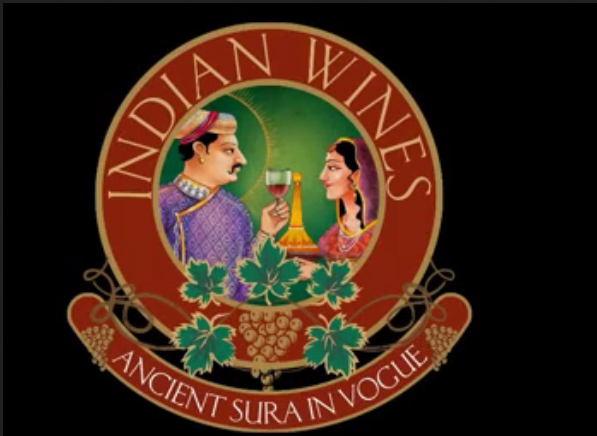
Known as madhyaja vishaakthathaa (alcoholic poisoning), booze is no slouch in this department. Historically too, concerns over the overconsumption of alcohol were present and prescient. Unfortunately, not only beer and wine, but high-proof spirits have temporarily increased spirits but permanently endangered many lives. The root of this has been a culture of irresponsibility for men and women alike.
In aping “global” modernity, these metro-youth embody the worst of both worlds: neither the responsible traditional behaviour of their ancestors, nor the etiquette and civic culture of their Western counterparts. The caution of poorvachaaryas has gone to the wind. Here is their remedy:
Medicated Ghee, vaatha pacifying foods (culinaries) and induced vomiting in extreme and near unresponsive states. This aligns with the modern use of gastric lavage (stomach pumping). Ultimately, there is no substitute for teetotalling:
“As per Sage Caraka:
Nivrtthah savamadhebhyo naro yascha jitendhriyah |
Shareeramaanasairdheemaanvikaaraina sa yujyathe || CS.Ci.24.206
A dheemaan (wise person), who is jitendriya (Self controlled all senses) and who refrains from gulping all kinds of madya (alcohol), never suffers froms aareera (somatic) and maanasa (psychic) vikaaras (disorders).” [1, 131]
Indeed, it is not for nothing Swami Vivekananda said: “What is poison? Anything in excess“. The poisonous effects of even beneficial activities (partaking of food, experiencing maithuna, etc) become poisonous if overdone. Elsewhere, smoke inhalation and even certain minerals are recognised as toxic.
Mineral poisoning
Last, but certainly not least, minerals and an assortment of naturally occuring objects can be toxic. Dhoosheevisha (polluting poison) and garavisha (slow-acting poison) are named as deleterious phenomena to one’s health. One can classify known minerals today like mercury and uranium as such static poisons (sthaavara visha). Interestingly, Vatsanabha (of aforementioned Gorochana fame) is explicitly listed as one:
“In vatsanaabha poisoning, there occurs greevaastambha (neck rigidity) and peeta vin-mootra-netrataa (yellowness in faeces, urine and eyes). As per Rasataranginee:
Avishuddham visham dhaaham mohamhrdhgathirodhanam | mrthyucha || RT.24.18
Consumption of avisuddha (not purified) vatsanaabha is manifested by daaha (burning sensation), moha (stupor), hrdgatirodhana (cardiace arrest) and ultimately death.” [1, 69]
This shrub is located in the Himalayas (specifically Nepal, Sikkim, & Uttarakhand (Garhwal)). The finding is validated by modern medicine, which identifies untreated aconite (vatsanabha) as fatal in doses as small as 1 gm (25 drops tincture). Other materials include harathaala (yellow arsenic), yashadha (zinc), vanga (tin), paaradha (mercury/quicksilver) & in the Rasatarangini, Tambaakoo (tobacco). [1, 96-7]
Slow-acting poisons in excess quantities:
“Beeja (seeds) of Vishatinduka (strychnos nux vomica), Ahiphena (Papaver somniferum), Recaka (Croton tiglium), beeja (seeds) of Dhattoora (Datura metel), Vijayaa (Cannabis sativa), Gunjaa (Abrus precatorious), Bhallaataka (Semecarpus anacar-dium), Arka-ksheera (latex of Calotropis procera), Snuhee-ksheera (latex of Euphorbia neriifolia), Laangalee (Gloriosa superba) and Karaveera (Nerium indicum/Thevetia neriifolia).” [1, 7]
There is a laundry list in the rasaadha (poisoner) or teekshna (assassin) toolkit that is beyond the scope of this article. There is an whole section on avachaarana (administration of poison— legally and ethically obligated to omit here…). Suffice it to say, Ancient India’s history is replete with such colourful episodes regarding poisoning and the plethora of methodology surrounding it. It is a reality that cannot be ignored, and that can only be remedied (in some part) through knowledge and application of Agada Tantra.

Personalities
Dhanvanthari
Sushruta
Charaka
Vrddha Vagbhata
Bhava Mishra
Paramaara Bhoja
Narahari Pandit
Kaviraaja Sadhaananda Sarma
Important Texts
Dhanvantari Nighantu
Charaka Samhitha
Sushrutha Samhitha
Haaritha Samitha
Ashtaangahrdhaya Soothrasthaana
Maadhava Nidhaana
Yogarathnaakara
Amarakosha of Amarasimha
Bhavaprakaasha Nighantu
Lokopakaara of Chaavundaraaya
Raaja Nighantu
Bhaisajya Ratnavali
Ashtaanga Shighlaha Uttarasthaana
Rasendra Saara Sangraha
Rasatarangini (20th Century CE)
Conclusion
Cloistered in metro areas, people today are not as accustomed to dealing with venomous creatures on their own, let alone on a frequent basis. Basic knowledge of how to treat such scenarios is important for any individual. Those precious seconds can often make a difference in a life-or-death situation. It is true that modern medicine has produced some of the most effective anti-venins known to mankind. Their production was made possible by the brave men and women who fearlessly handle such fiendish creatures and extract venom to synthesise solutions.
At the same time, without recourse to state-of-the-art machinery and methods, those in rural areas (or those urbanite passers-by) should not feel completely helpless. Basic knowledge of traditional methods can provide some avail in such situations.
While it is wise to buy First Aid books with treatment suggestions in such situations, basic knowledge of poison control can be of use to solitary or two person incidents. This is where Agada Tantra remains relevant even today.
Whether one applies it or not, whether those in rural areas are instructed in it or not, Agada Tantra (taught by certified experts) can provide depth in the treatment of poison victims. Although there can be no substitute to that perfectly concocted anti-venin, education in the identification of bites, poisons, and vermin can ensure that individuals have a chance rather than automatically becoming a statistic.
Agada Tantra was the poison control of ancient India, and can provide at least secondary assistance even in post-modern Bhaarathavarsha. It is advocated not due to the existence of literal snake-oil salesmen, but rather, because the time-tested methods are often the best methods.
“Indian medicine lives because of the world purpose which she has to fulfil: because the world will be enriched by what she can give to the other medical systems. We Indians are the custodians of this treasure…It deserves to be preserved and investigated in the right spirit of the seekers after truth.” [3, 170]

Disclaimer: This article should not be construed as constituting professional medical advice. Readers should consult a licensed physician or accredited Ayurvedic vaidya for curative and actionable health information. This Blog Post is meant to serve as an aid for resources and an introduction to a Topic within the Subject of Ayurveda.
References:
- Pattanaik, Jina Dr. & Dr. Deepak Yadav Premchand. Ayodhya Prasad Achal’s Agada Tantra: Text Book of Ayurvedic Toxicology. Varanasi: Chaukhamba. 2019
- Kutumbiah, P. Ancient Indian Medicine.Chennai: Novena.1999
- Sharma, Krishna (Ayurvedacharya). The System of Ayurveda. Khemraj Shrikrishnadass. Bombay: Shri Venkateshwar Steam Press. 1995
- Ayangarya, Valmiki Sreenivasa. Lokopakara (For the Benefit of People). Asian Agri-History Foundation. Secunderabad. 2006
